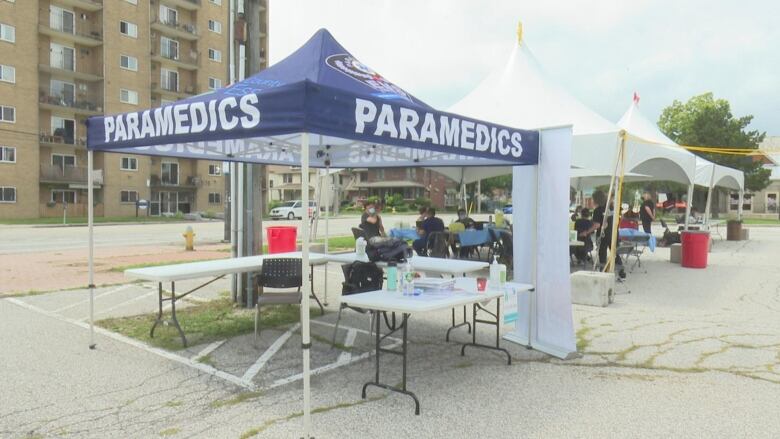Windsor-Essex youth vaccination rate lags as public health looks to move the needle
Medical officer of health concerned about low uptake among age 12-17 group

At an outdoor pop-up clinicin downtown Windsor this week, newly vaccinated youth were looking forward to the future, and to things getting closerto normal.
"I'm most excited for to see my friends, go to school," said JabrielElnour, who is 13and had just been given his second dose of a COVID-19 vaccine.
Twelve-year-old Anthony Pardosaid he was looking forward to seeing his friends as well.
"I feel free now," he said after getting his final shot on Tuesday.
But local statistics show only half of their peers aged 12 to 17arevaccinated with one or two doses, even though anyone in that age grouphas been eligible to receive the Pfizer-BioNTech vaccinesince late May.
The low youth coverage rate isboth a concern and a bit of a surprisefor Windsor-Essex medical officer of health Dr. Wajid Ahmed, who wants to see all of theregion's youth vaccinated before the school year resumes in September.
"Our adults in our community rolled up their sleeves very quickly to get the vaccine for themselves," he said last week.
Youth vaccinationrate below Ontarioaverage
According to statistics from the Windsor-Essex County Health Unit, more than three-quarters ofresidents 18 or older 75.8per cent as of Wednesday have received at least one shot. Among youth12 to 17, however, the rate is 51.3 per cent.
Provincially, the youth vaccination rate isat 61 per cent nearly 10 percentage points higher than the Windsor-Essex rate.
The local public health unit and other partners and organizations have been operating pop-up clinicsto lower the barriers to vaccinationand boostthe coverage rate within laggingsegments of the population. And as of Wednesday, anyone can receivea first dose at one of the fivemass vaccination siteswithout an appointment.
Tuesday'soutdoor clinic was targeted at the downtown area and youth, saidLaura Strathdee, manager of operations and logistics for Ontario Health andErie Shores HealthCare, one of the partners behind Tuesday's event.
"We're actively planning with the health unit and community partners for more youth pop-ups. It is our mission for the summer to get the community through this."
If significant portions of the eligible youth population don't get vaccinated, that could lead to COVID-19 outbreaks this fall,and students could be sent to learn from home once again, Ahmed said.
"No one wants that, and we need to make sure that our children are getting the full two doses before they startschool."
'Wicked problem'
People with questions about receiving the COVID-19 shotshould connect with a health-care provider or someone who can provide expert advice, saidDr.Anne Pham-Huy,chair of Immunize Canada, a nationalcoalition that promotesvaccination and education surrounding vaccines.
"I think there's almost fear of asking the questions, so that you're not perceived as you're against vaccines," she said.
It's not clear what role thatbarriers to vaccination for example, parents having to take time off work to bring their kids to a vaccine clinicare playing in the low youth vaccination rate, as opposed to reluctance to receive the vaccine itself.
But when looking at what's driving vaccine hesitancy, it'simportant to consider the communityand what specific factorspeopleare concerned about, shesaid.
"That's one thinginvaccine hesitancy, or when people have concerns about vaccines,is not to assume that everyone has the same issue," said Pham-Huy, apediatric infectious diseases physician at theChildren's Hospital of Eastern Ontario in Ottawa.

Pham-Huy said vaccine hesitancy is known as a "wicked problem"a term referring tosocietal issues that are notoriously difficult to tacklebecause of the many factors fuelling it, as well as thepotential solutions.
Butonereason boils down to risk perception.Some mightthink the risk of receivingavaccine, and potentially experiencing side-effects, is higher than the risk of contracting the disease itself, she said. In the case of COVID-19, serious cases among children and youth have been much rarer than compared withadults.
With files from Chris Ensing













_(720p).jpg)


 OFFICIAL HD MUSIC VIDEO.jpg)
.jpg)



























































































